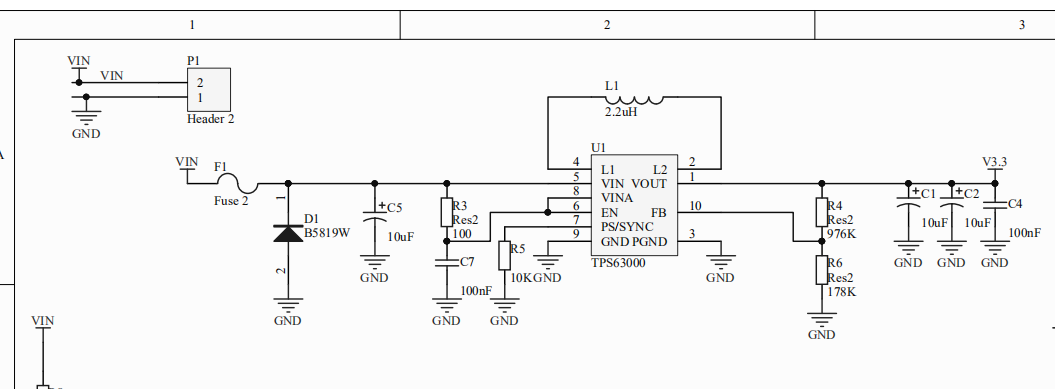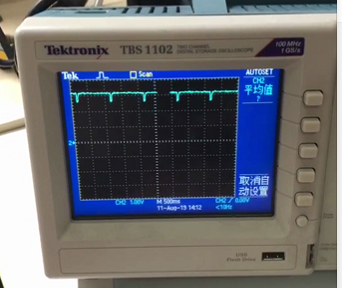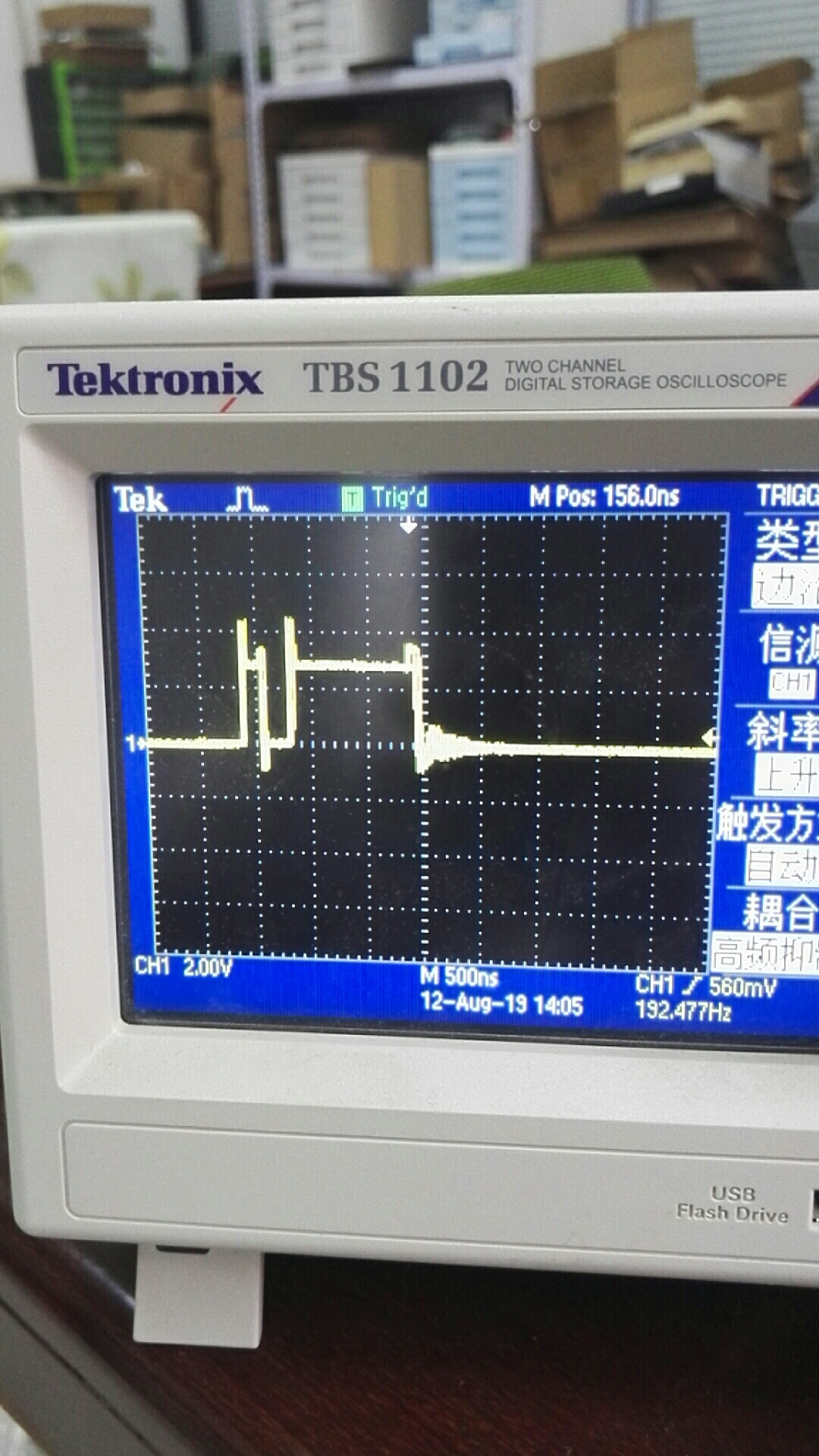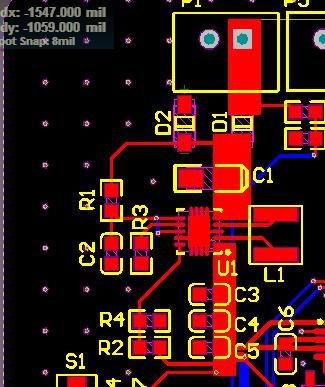Other Parts Discussed in Thread: TPS63020
Equipment 3.6V battery power supply, found that the battery quickly lost power, board MCU, TPS63000, wireless module several chips, test wireless module working current 100mA, not working under 5mA, TPS63000 heating, wireless module not working, board power consumption reached hundreds of milliamperes, the following figure 1 is a circuit diagram, Vout measurement found that there is a sharp point. Peak, Figure 2 below is Vout, Figure 3 is the waveform at the measured inductance.




